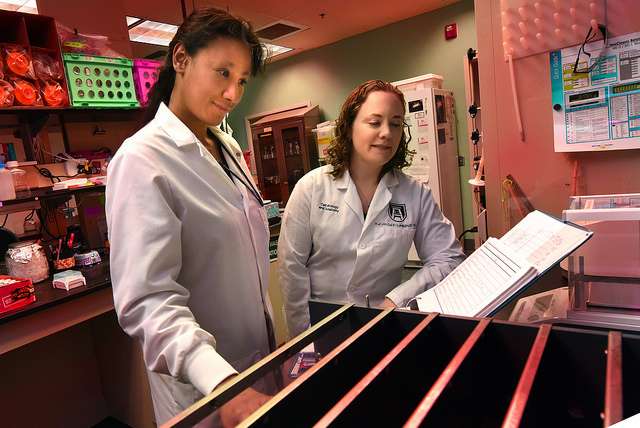Whole Body Vibration Has Same Benefits as Treadmill Walking in Diabetic, Obese Mice

From left, Alexis M. Stranahan, MD, and Meghan E. McGee-Lawrence, MD, of Augusta University's Georgia College of Medicine. (Credit: Phil Jones)
A study of obese, diabetic mice found that vibrating their entire bodies for 20 minutes daily for three months reduced their body fat and insulin resistance while improving muscle and bone strength — much the same way walking on a treadmill would have done.
The study, “Whole-body Vibration Mimics the Metabolic Effects of Exercise in Male Leptin Receptor Deficient Mice,” appeared in the journal Endocrinology.
“The bone is increasingly recognized as more of an endocrine organ because it can secrete hormones that tell the liver and the pancreas what to do,” Alexis M. Stranahan, MD, a neuroscientist at Augusta University’s Medical College of Georgia (MCG), said in a news release. “Every time you walk or run or stand on a vibrating platform, your bones are experiencing sheer stress and that sheer stress can change how those metabolically relevant hormones get released.”
The vibration regime also reduced fat stored in the abdominal region, where fat has bad effects on the heart and general health, and on the liver, where fat can cause damage similar to excessive alcohol intake. Insulin resistance in mice also dropped.
In the lab mice, both exercise and whole body vibration pushed up levels of a naturally occurring protein called osteocalcin. It is made by osteoblasts — bone cells that build bone, and that are incorporated into bone to help make it strong.
Even shaking bone or muscle cells in a dish produced some of the same positive responses, researchers found. They think the vibration may cause its effects by getting the cells moving.
“I think the exciting thing about this study is that it shows you can apply the mechanical load in a different way,” said first author Meghan E. McGee-Lawrence, MD, biomedical engineer at MCG’s Department of Cellular Biology and Anatomy. “Whether you are walking on a treadmill, running on a treadmill or standing on a vibrating platform, it’s still a mechanical load.”
McGee-Lawrence explained that “whole body vibration could have some of the same beneficial effects as exercise and yet be less strenuous,” adding that some patients with physical or time limitations could benefit from this approach.







